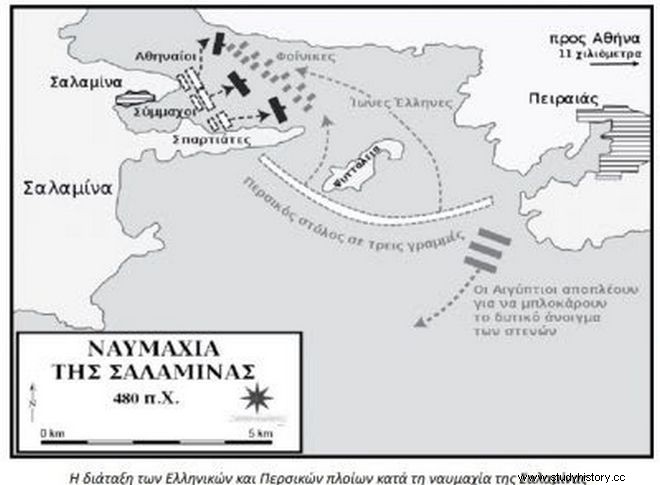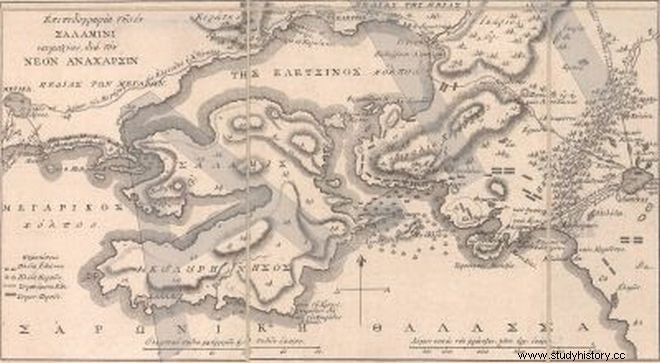The Naval Battle of Salamis is known to all of us and is one of the most famous examples of the military exploitation of the wind. In all the explorations or campaigns of the peoples, the weather factor and especially the wind was sometimes an ally and sometimes an enemy. Those who knew the weather conditions of each place or the sea currents and winds, exploited them not only for commercial voyages but also for defensive or offensive operations. In other words, the weather factor many times acted as a "war" machine and changed History.
Xerxes with his numerous huge and cumbersome ships blocks the small Athenian fleet of Themistocles in the straits of Salamis. Three hundred and seventy-eight triremes, against about one thousand two hundred Persian ships. The Greek captains wanted to withdraw to the Argolic Gulf fearing the power of Xerxes, but Themistocles persuaded them to remain in the position assigned to them. At the same time, however, showing intelligence in psychological warfare and counter-espionage, he made sure Xerxes was aware that the Greeks felt insecure and were at odds with each other, with the aim of trapping him.

Themistocles knew the characteristics of the "yearly" winds, but also of the sea breeze, called orithia by the ancients. Aeschylus writes that the morning of the naval battle was sunny, and with this testimony, any other type of weather is excluded except that of the sea breeze and the etesia - that is, the meltemium - which are observed with a clear sky. On the other hand, it is certain that there was a wind, because Herodotus notes that the Corinthian Adeimantus in his panic raised sails and hurried away.
On the day of the naval battle, where initially nothing was moving, Themistocles sends some ships to harass the vanguard of the Persian fleet from the bays of Salamis where it was hiding and Xerxes falls into the trap. He sends his ships from the north of the strait to cut off the forces of the Greeks and from the south at the same time, he moved in the belief that he would trap the Athenian fleet in the Persian vice. And inside the strait is what Themistocles planned and expected.

At noon the famous "yearly" wind, the meltemi as we call it today, came and blew so hard that the Persians were utterly defeated. The huge and unwieldy ships of the Persians were unable to maneuver due to the narrowness of the sea channel, and the small and flexible triremes from the western bays of Salamis constantly rammed them, with the result that the would-be conquerors were trapped among the wrecks that were created. Thus, of the 1,207 Persian ships - today most historians believe it was 600,800, 200 were lost, as well as a large number of warriors, many of whom drowned in the sea as they did not know how to swim, while of the 378 triremes, the Greeks lost 40.
See the evolution of the Naval Battle in the following video:
Follow News247.gr on Google News and be the first to know all the news
